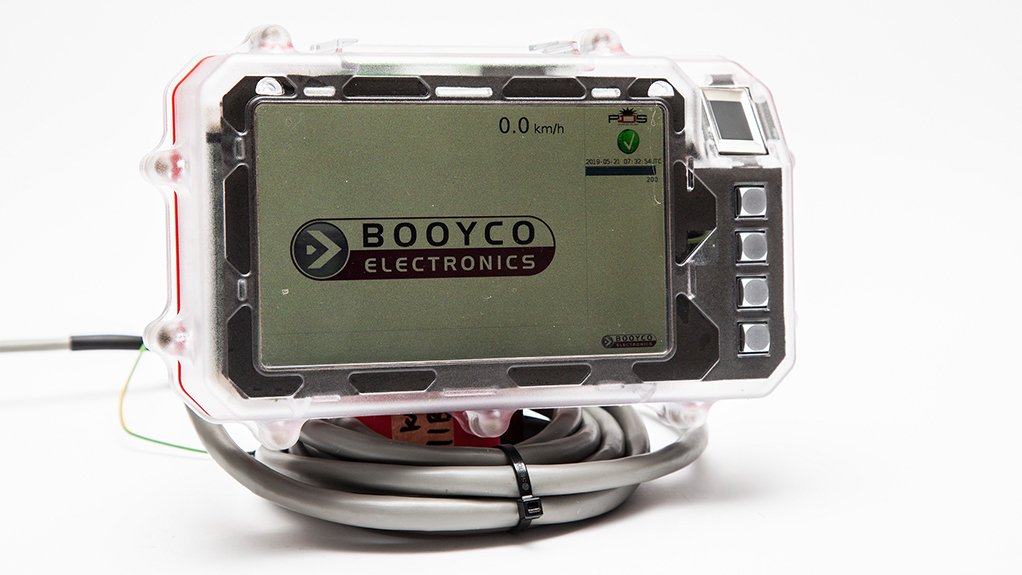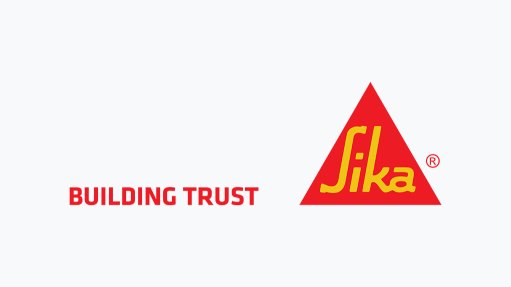PDS provider ready to implement Level 9 systems


EARLY WARNING SYSTEM Booyco Electronics' control unit provides audio and visual displays
South African-based equipment supplier Booyco Electronics is well advanced in testing its proximity detection systems (PDS) to comply with Level 9 safety standards – despite the fact that, while the Mine Health and Safety Act regulations pertaining to Level 9 implementation have been promulgated, they have yet to be enacted.
These regulations require mines to take “reasonably practicable measures” to prevent collisions between trackless mobile machines (TMMs) – as well as between pedestrians and TMMs.
Past measures have included systems that warn pedestrians and operators of their proximity to TMMs (Level 7) and systems that deliver an instruction to the operators (Level 8).
“The Level 9 standard raises the bar significantly, requiring electronic PDS systems to identify and predict significant risk scenarios, and then instruct the TMM to take mechanical control of the TMM and automatically bringing it to a stop when such a dangerous situation is detected,” says Booyco Electronics CEO Anton Lourens. “This elevates what is traditionally called a PDS into what is really a collision avoidance – or collision management – system.”
He notes that Booyco Electronics was the first supplier to begin formal Level 9 testing in South Africa. The tests, conducted by the University of Pretoria’s Vehicle Dynamics Group (VDG), have enabled continuous improvement.
Further, the tests are meant to determine whether the system’s capabilities match those stated by the supplier, with Lourens explaining that the supplier provides a list of expectations, stipulating how the system should react in certain scenarios. In this way, the VDG tests do not preclude any suppliers, rather they demonstrate whether the equipment performs as stated.
Lourens also notes that, initially, Booyco Electronics used the tests to validate its information, and to gain greater insight into its systems’ performance. Now, the tests have become part of its research and development, enabling it to adapt its systems in line with the changing parameters of Level 9. Specifically, beyond just stopping a vehicle, the Booyco PDS can also instruct the vehicle to reduce its speed to a specific level under given conditions.
Further, the report generated by the VDG can be used for marketing purposes.
The tests are also aligned with the international standard ISO21815. Lourens explains that this standard defines guidelines pertaining to the interaction between an external system, and that of the original-equipment manufacturers’ (OEMs’) machinery.
He notes that prior to the introduction of this standard, there was significant resistance by OEMs regarding the addition of external sensing equipment to their machinery. Lourens notes that this was justified, particularly in terms of liability.
He explains that this reluctance has changed over the last three years, because of the work done globally to define the specification, which necessitates that any external system make use of “one portal, one point of entry, when accessing and interacting with the OEMs’ equipment”.
Implementation
Mines are legally obliged to complete a risk assessment to determine whether the use of a PDS system is necessary. Lourens adds that one aspect that mines do not always consider, is the level of PDS required.
He notes that mines look at the looming deadline for Level 9 implementation and panic, without considering whether all their equipment needs to meet the Level 9 standard in the first place, adding that, based on the risk assessment, Level 7 or 8 might be sufficient.
Lourens notes that, for most mines, proper traffic management, and segregating people and mobile machinery, “halves your work.” He adds that, where systems become crucial to saving lives is in situations where pedestrians and machinery cannot be entirely segregated.
Further, the “significant risk” criterion, used to determine whether a PDS system is required, can differ depending on whether the equipment in question primarily interacts with people or other machinery.
“As an example, a drill rig is slow moving, it doesn’t move around a lot, doesn’t have a lot of interaction with people, so it doesn’t necessarily need a Level 9 system from a pedestrian point of view. However, the risk will increase should the rig bump into a load haul dumper. The question that needs to be asked before implementing a PDS system is whether it’s to detect people, other machinery, or both, and that, combined with the traffic flow analysis will determine the level of system required.”
Additionally, Lourens explains that the industry has experienced exponential growth in technology, enabling the requirements stipulated by the regulations. However, he stresses that the people that interact with these systems need to “accept and embrace” them, or implementation will fail.
“The technology must engage with the operator, warning them, instead of just slamming on the brakes. You can imagine that if the system were to intervene ten times a day, applying the brakes without any indication, the operator may be jolted and hurt, or may become frustrated. Further, if the operator doesn’t understand why the system is needed, the operator may maliciously damage, or tamper, with the system.”
He adds that without an integrated approach and continuous engagement with all stakeholders, the PDS will not be successful. Moreover, from a supplier point of view, feedback from users is crucial to ensuring that the product suits the application. “We need continuous feedback from operators regarding their experiences so that we can improve on the system.”
Lourens notes that Booyco Electronics has well over 100 clients, and that no two deployed applications are alike. “Every mining method requires a different solution. So, what we’ve done is develop a standard hardware platform suitable for every application, but we then add specific configuration or customisation files onto that platform to provide a solution that is fit for purpose, for every customer.”
Article Enquiry
Email Article
Save Article
Feedback
To advertise email advertising@creamermedia.co.za or click here
Comments
Press Office
Announcements
What's On
Subscribe to improve your user experience...
Option 1 (equivalent of R125 a month):
Receive a weekly copy of Creamer Media's Engineering News & Mining Weekly magazine
(print copy for those in South Africa and e-magazine for those outside of South Africa)
Receive daily email newsletters
Access to full search results
Access archive of magazine back copies
Access to Projects in Progress
Access to ONE Research Report of your choice in PDF format
Option 2 (equivalent of R375 a month):
All benefits from Option 1
PLUS
Access to Creamer Media's Research Channel Africa for ALL Research Reports, in PDF format, on various industrial and mining sectors
including Electricity; Water; Energy Transition; Hydrogen; Roads, Rail and Ports; Coal; Gold; Platinum; Battery Metals; etc.
Already a subscriber?
Forgotten your password?
Receive weekly copy of Creamer Media's Engineering News & Mining Weekly magazine (print copy for those in South Africa and e-magazine for those outside of South Africa)
➕
Recieve daily email newsletters
➕
Access to full search results
➕
Access archive of magazine back copies
➕
Access to Projects in Progress
➕
Access to ONE Research Report of your choice in PDF format
RESEARCH CHANNEL AFRICA
R4500 (equivalent of R375 a month)
SUBSCRIBEAll benefits from Option 1
➕
Access to Creamer Media's Research Channel Africa for ALL Research Reports on various industrial and mining sectors, in PDF format, including on:
Electricity
➕
Water
➕
Energy Transition
➕
Hydrogen
➕
Roads, Rail and Ports
➕
Coal
➕
Gold
➕
Platinum
➕
Battery Metals
➕
etc.
Receive all benefits from Option 1 or Option 2 delivered to numerous people at your company
➕
Multiple User names and Passwords for simultaneous log-ins
➕
Intranet integration access to all in your organisation















